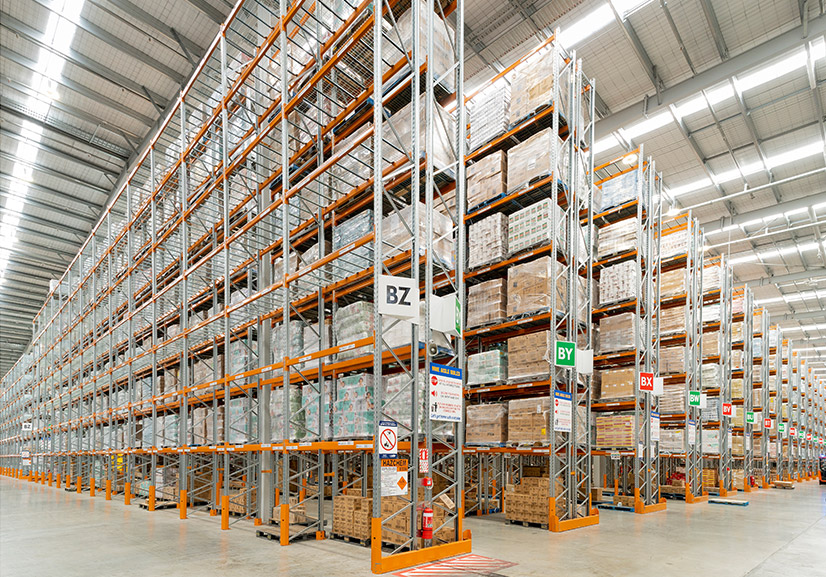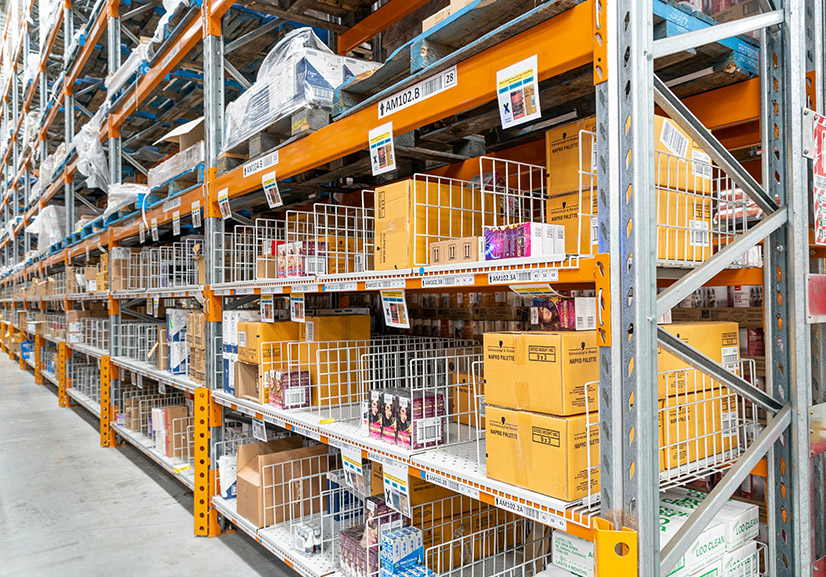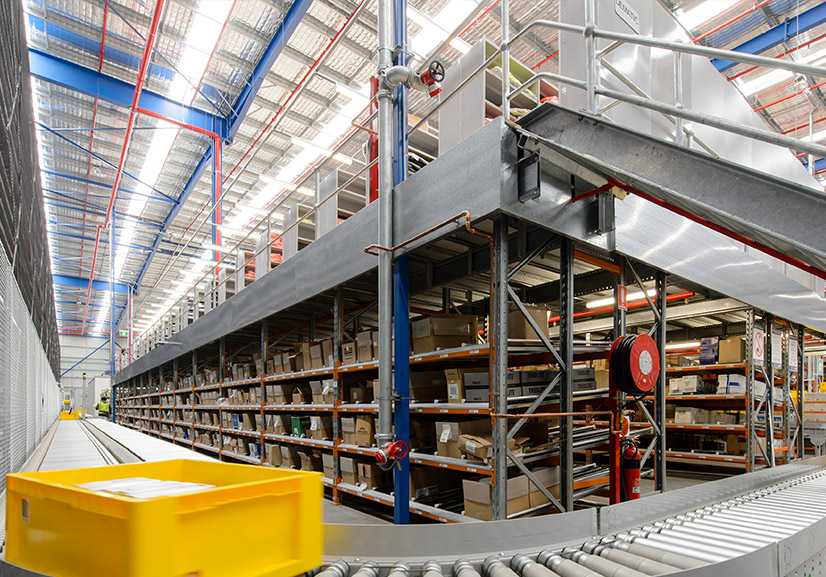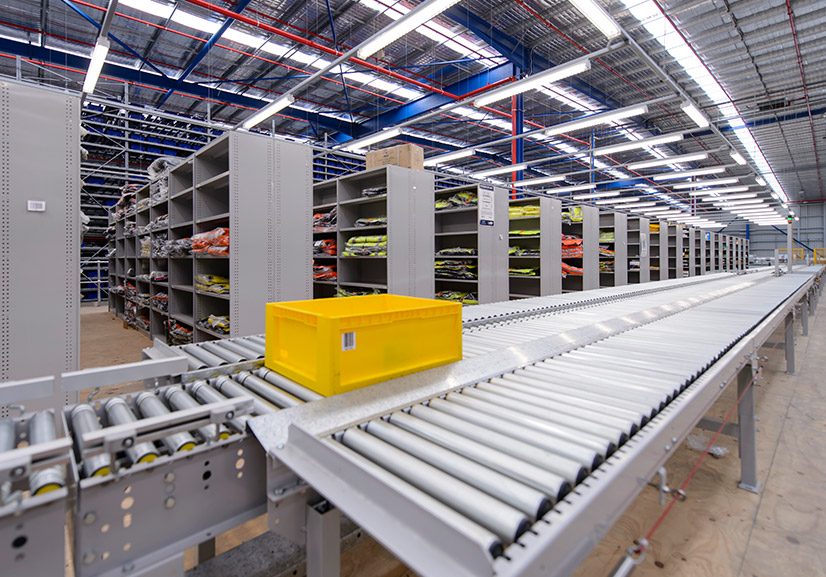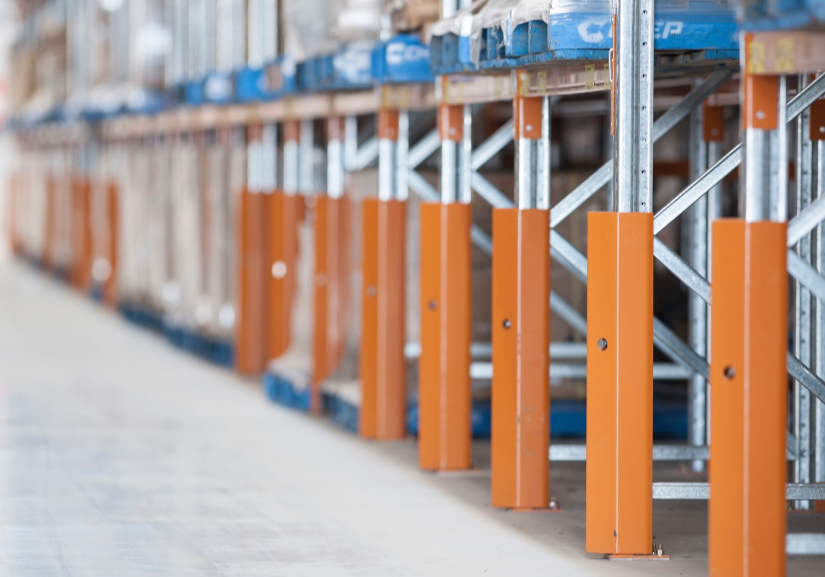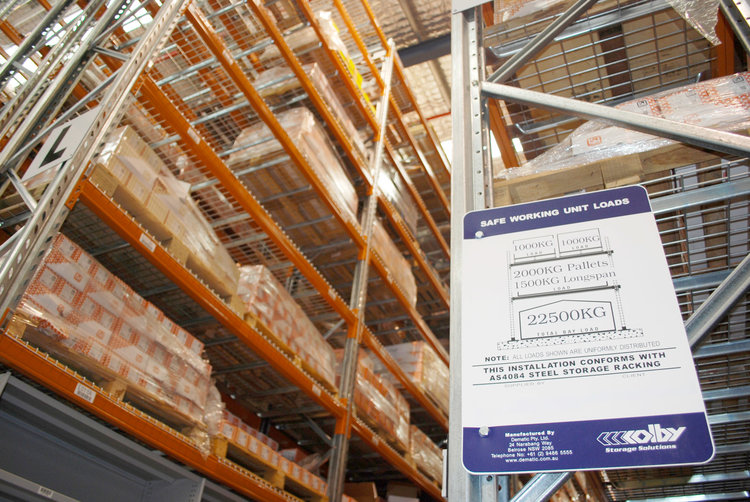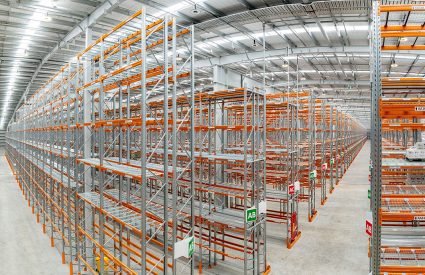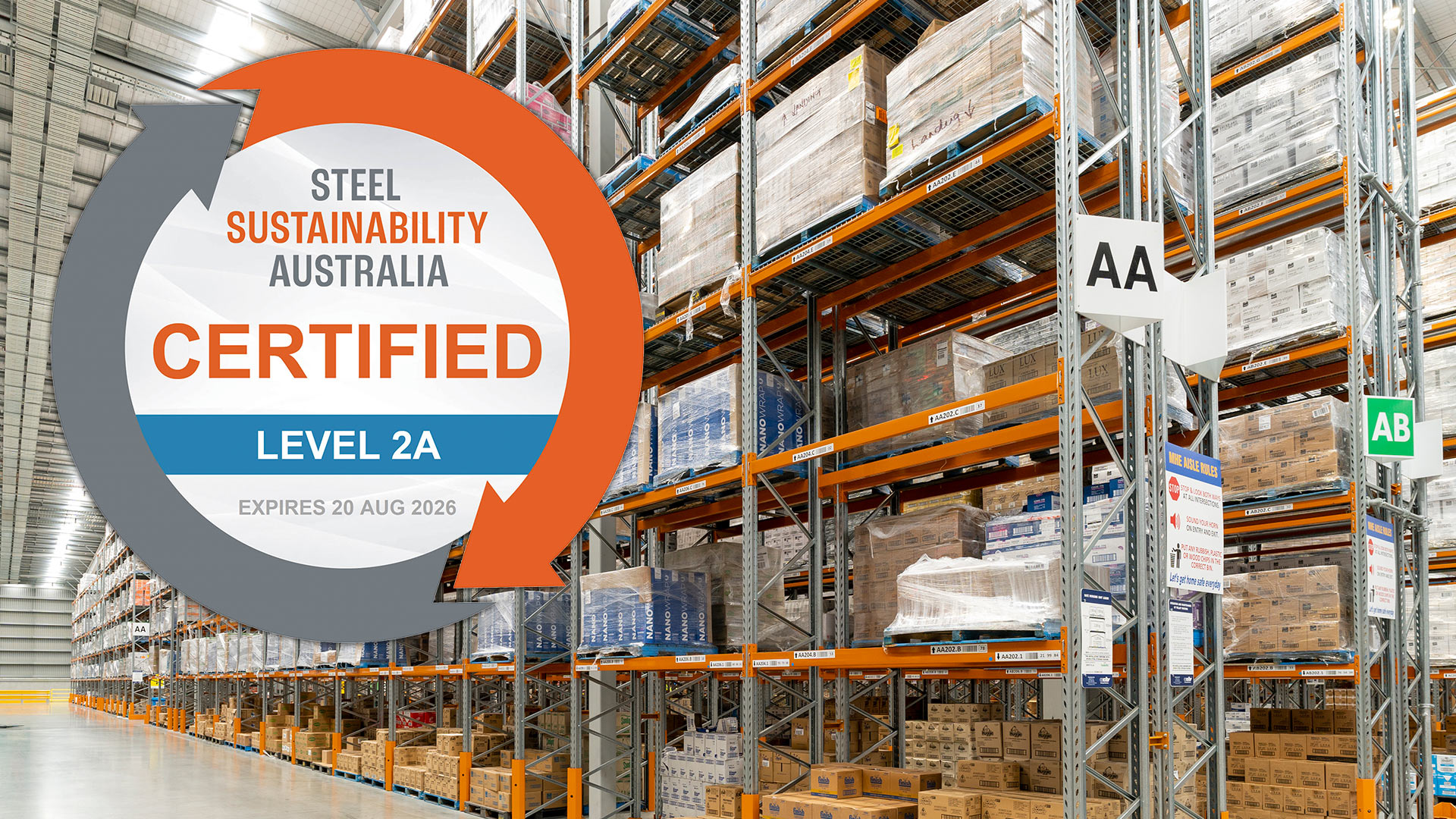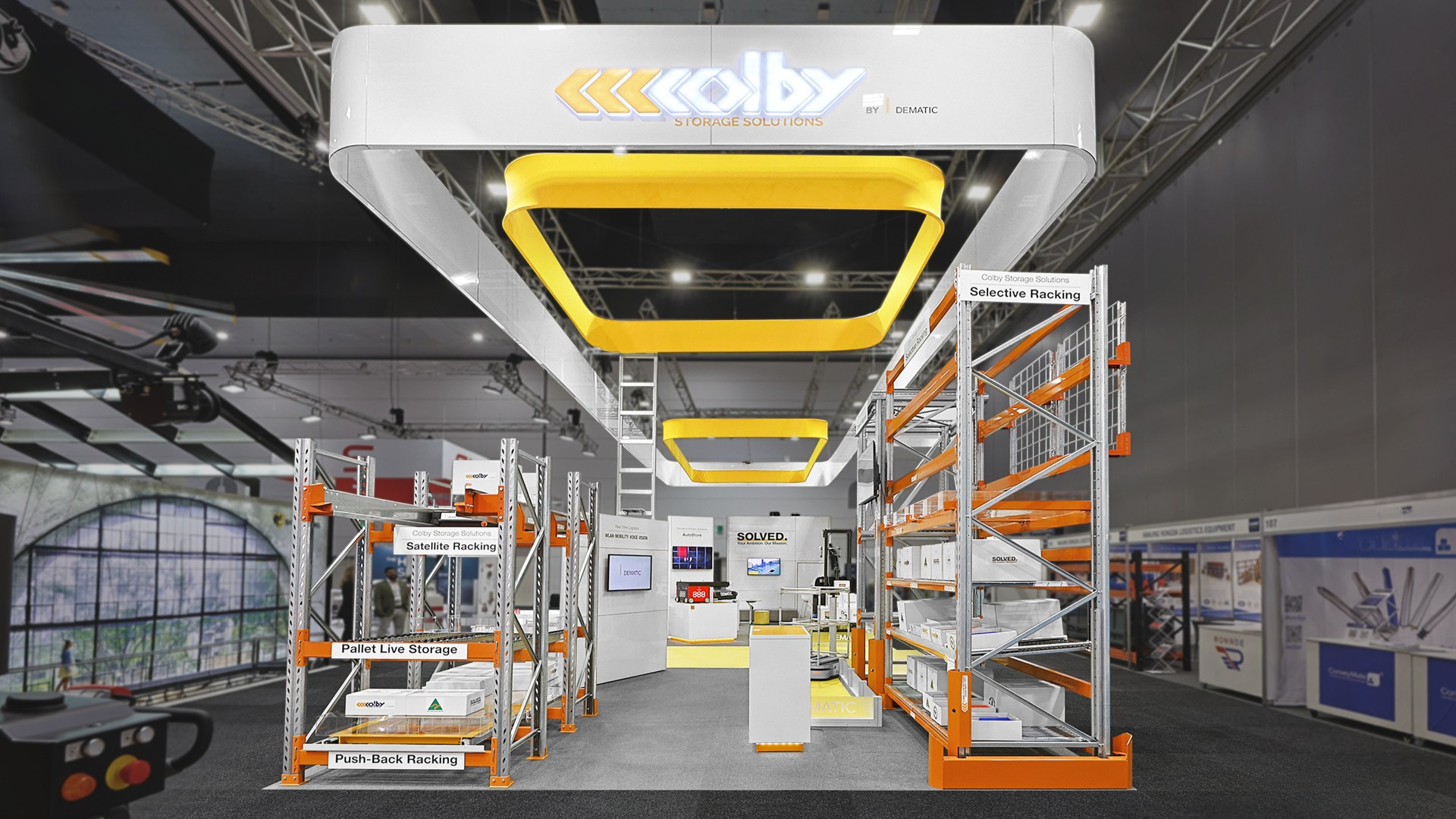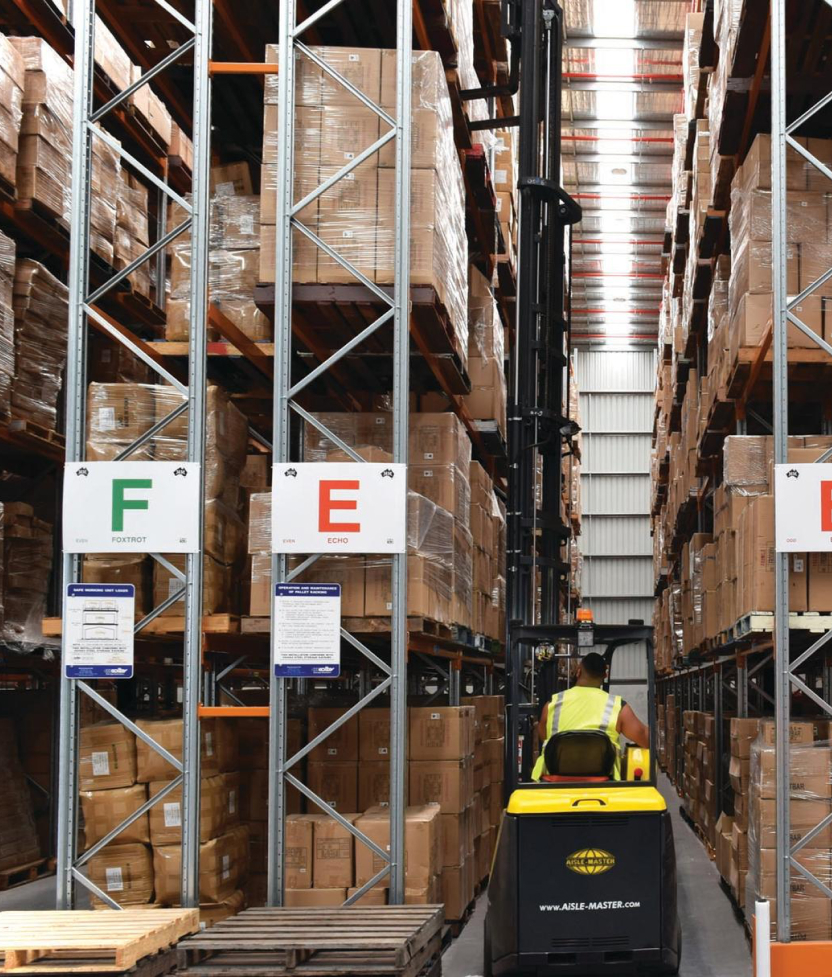Businesses that use storage equipment have the prime responsibility for the safety of people working near the storage equipment and for its safe working condition. The safety in use of storage equipment serviced by forklift trucks or other mechanical handling equipment requires special attention. This is due to the severity of the damage that may be inflicted on the racking components by accident, or by the faulty use of the handling equipment, combined with the usually considerable weight of the unit loads that may fall because of damaged racking.
Where mechanical handling equipment is used, safe-working conditions should be established by the business to minimise the chances of damage to the storage equipment. Safety can be improved by operator training and by avoiding conditions that will inevitably give rise to difficult working conditions.
Reduction of margin of safety due to damage
Almost all damage to storage equipment carrying palletised loads is inflicted by the handling equipment moving in or around the storage. Most equipment damage results directly from collisions by forklifts trucks or from impacts by pallets being handled by trucks.
Users should be critically aware of the fact that any damage will erode the margins of safety inherent in the design and reduce the load carrying capacity. Sometimes the reduction in load capacity is so severe that a structural collapse will occur. Therefore, careful regular monitoring of the racking is essential to ensure that all damage is identified and dealt with promptly.
Reporting of damage
A collapse of all or part of a damaged rack may not necessarily be immediate but may take place over a period as long as 24 hours or more. The time taken from initial damage to collapse will depend upon the severity of the damage to a component, the location of the damage, the load capacity in relation to the load actually being carried by the component, etc. If a racking component is damaged it should be reported immediately and the appropriate safety or precautionary action taken.
Evaluation of damage
The frequency and severity of damage to storage equipment is influenced by factors such as the turnover rate of the stored goods, the skill of the forklift drivers, the extent and possibility of providing upright protection and the adequacy of the operational clearances. Ensuring that your storage system is safe, fully documented and compliant with current standards is an important aspect of warehouse management. It is also highly necessary in the context of increasing government regulation, which is designed to improve occupational health and safety.
To comply with Australian work safety laws, all industrial storage systems are required to be inspected by a qualified professional and have certified safety signage to indicate the maximum unit load rating for each storage level. Under the Australian Standard AS4084 2012, it is mandatory for all businesses to have their racking inspected at least once every 12 months, regardless of size, working loads or traffic.
Colby Storage Solution’s Racking Safety Inspection Audit service is designed to ensure safer operations in warehouses and distribution centres. With a team of highly trained professional rack inspectors who can ensure your site meets the necessary standards and safety requirements, Colby offers two levels of service depending on your needs – a rack audit and a rack inspection.
Inspection of storage equipment
Storage equipment must be inspected regularly for safety and for any damage that may have occurred. These inspections should be as thorough as possible bearing in mind the practicalities of the warehouse operation concerned, which might not allow for close examination of rear beams and uprights and also other components concealed by pallet or shelf loads.
These inspections look at a range of potential problem areas such as whether beams are overloaded, damaged or missing parts, whether anchor bolts are missing or loose, whether load signs are legible, whether uprights and footplates are damaged, whether the racking is plumb, and whether braces are damaged.
Records must be maintained of all damage or other safety problems found. Whenever required, the appropriate remedial action should be taken in good time and with due regard for the ongoing safety of the system.
Colby recommends annual inspections by Dematic- or Colby-authorised personnel to ensure compliance. In each case, the examination should be formal with a written report documenting the extent and results of the examination. These reports should be reviewed annually to generate feedback on improving operating procedures to minimise damage and improve safety.
Contact Colby Storage Solutions today to arrange your next rack inspection, and we will help you ensure the safety and compliance of your installation
- The article was originally published on 28 April 2022


 1800 984 873
1800 984 873 